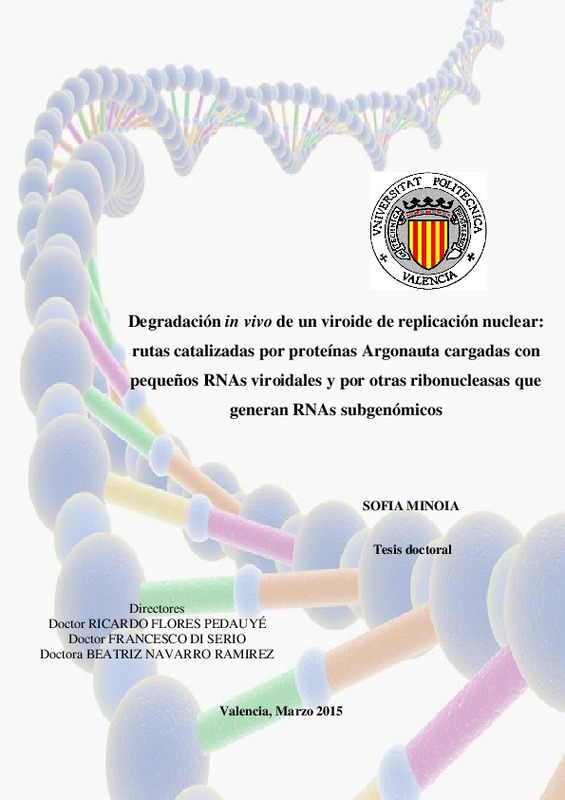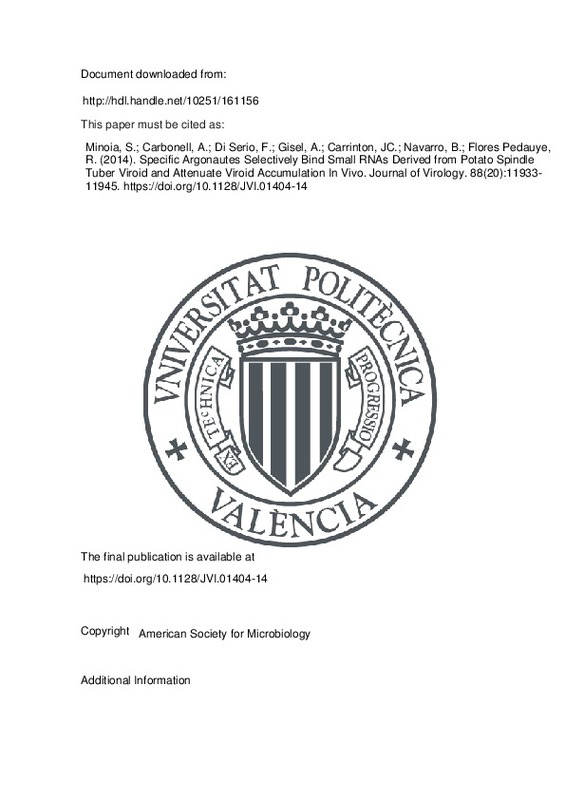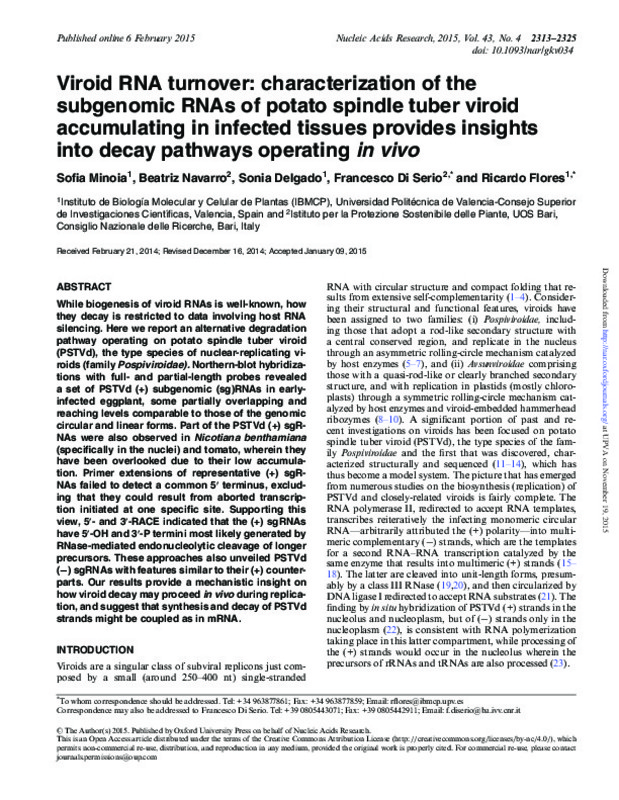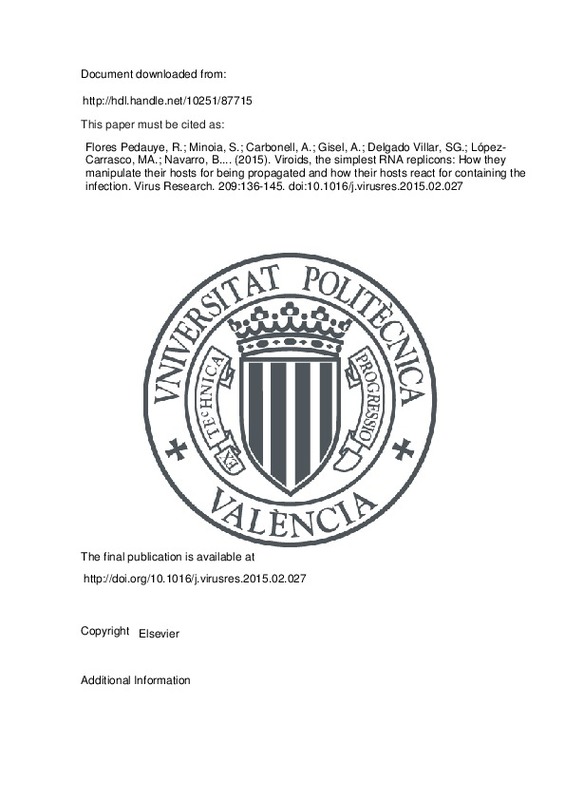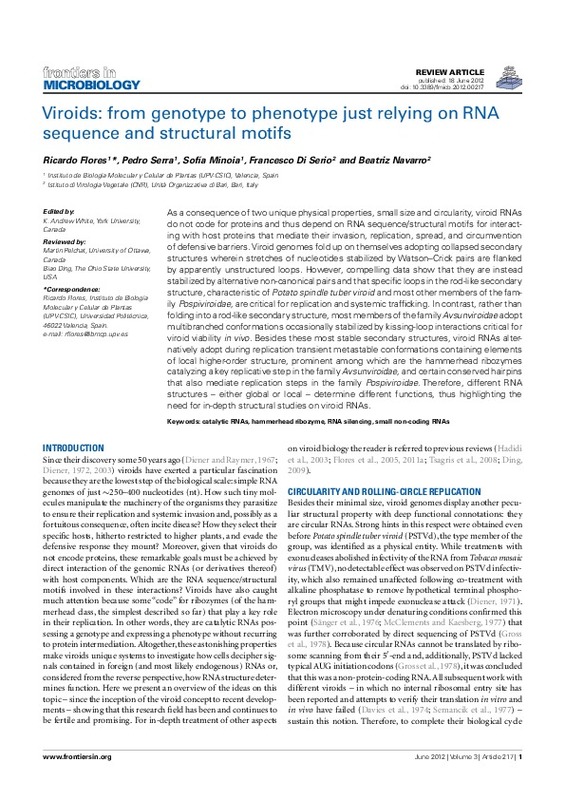

Listar por autor "Minoia, Sofia"
RiuNet: Repositorio Institucional de la Universidad Politécnica de Valencia
- RiuNet repositorio UPV
- :
- Listar por autor
JavaScript is disabled for your browser. Some features of this site may not work without it.
Buscar en RiuNet
Listar
Mi cuenta
Ayuda RiuNet
Admin. UPV
Listar por autor "Minoia, Sofia"
Mostrando ítems 1-7 de 7
-
Minoia, Sofia (Universitat Politècnica de València, 2015-03-31)Los viroides, los agentes infecciosos más simples de la escala biológica, están constituidos por una molécula circular de RNA monocatenario de aproximadamente 250-400 nucleótios (nt) que no codifica proteína alguna. A ...
-
MINOIA, SOFIA; CARBONELL, ALBERTO; Di Serio, Francesco; Gisel, Andreas; Carrinton, James C.; Navarro, Beatriz; FLORES PEDAUYE, RICARDO (American Society for Microbiology, 2014-10)
-
López-Carrasco, María Amparo; Gago Zachert, Selma Persida; Mileti, Giuseppe; Minoia, Sofia; Flores Pedauye, Ricardo; Delgado Villar, Sonia Guadalupe (Taylor & Francis, 2016-01-02)[EN] Eggplant latent viroid (ELVd), like other members of family Avsunviroidae, replicates in plastids through a symmetric rolling-circle mechanism in which elongation of RNA strands is most likely catalyzed by a nuclear-encoded ...
-
Minoia, Sofia; Navarro, B; Delgado Villar, Sonia Guadalupe; Di Serio, Francesco; Flores Pedauye, Ricardo (Oxford University Press (OUP), 2015-02-27)[EN] While biogenesis of viroid RNAs is well-known, how they decay is restricted to data involving host RNA silencing. Here we report an alternative degradation pathway operating on potato spindle tuber viroid (PSTVd), the ...
-
Minoia, Sofia; Navarro, B.; Covelli, L.; Barone, M.; Garcia-Becedas, M. T.; Ragozzino, A.; Alioto, D.; Flores Pedauye, Ricardo; DI SERIO, F (Springer Verlag (Germany), 2014-03)Cherry trees from Spain affected by cherry leaf scorch (CLS), a fungal disease proposed to be caused by Apiognomonia erythrostoma, show symptoms (translucent-chlorotic leaf spots evolving into rusty areas) very similar to ...
-
Flores Pedauye, Ricardo; Minoia, Sofia; Carbonell, Alberto; Gisel, A.; Delgado Villar, Sonia Guadalupe; López-Carrasco, María Amparo; Navarro, B; Di Serio, Francesco (Elsevier, 2015-11-02)[EN] The discovery of viroids about 45 years ago heralded a revolution in Biology: small RNAs comprising around 350 nt were found to be able to replicate autonomously and to incite diseases in certain plants without encoding ...
-
Flores Pedauye, Ricardo; Serra Alfonso, Pedro; Minoia, Sofia; Di Serio, Francesco; Navarro, Beatriz (Frontiers Media, 2012)[EN] As a consequence of two unique physical properties, small size and circularity, viroid RNAs do not code for proteins and thus depend on RNA sequence/structural motifs for interacting with host proteins that mediate ...
Mostrando ítems 1-7 de 7

Universitat Politècnica de València. Unidad de Documentación Científica de la Biblioteca (+34) 96 387 70 85 · RiuNet@bib.upv.es


